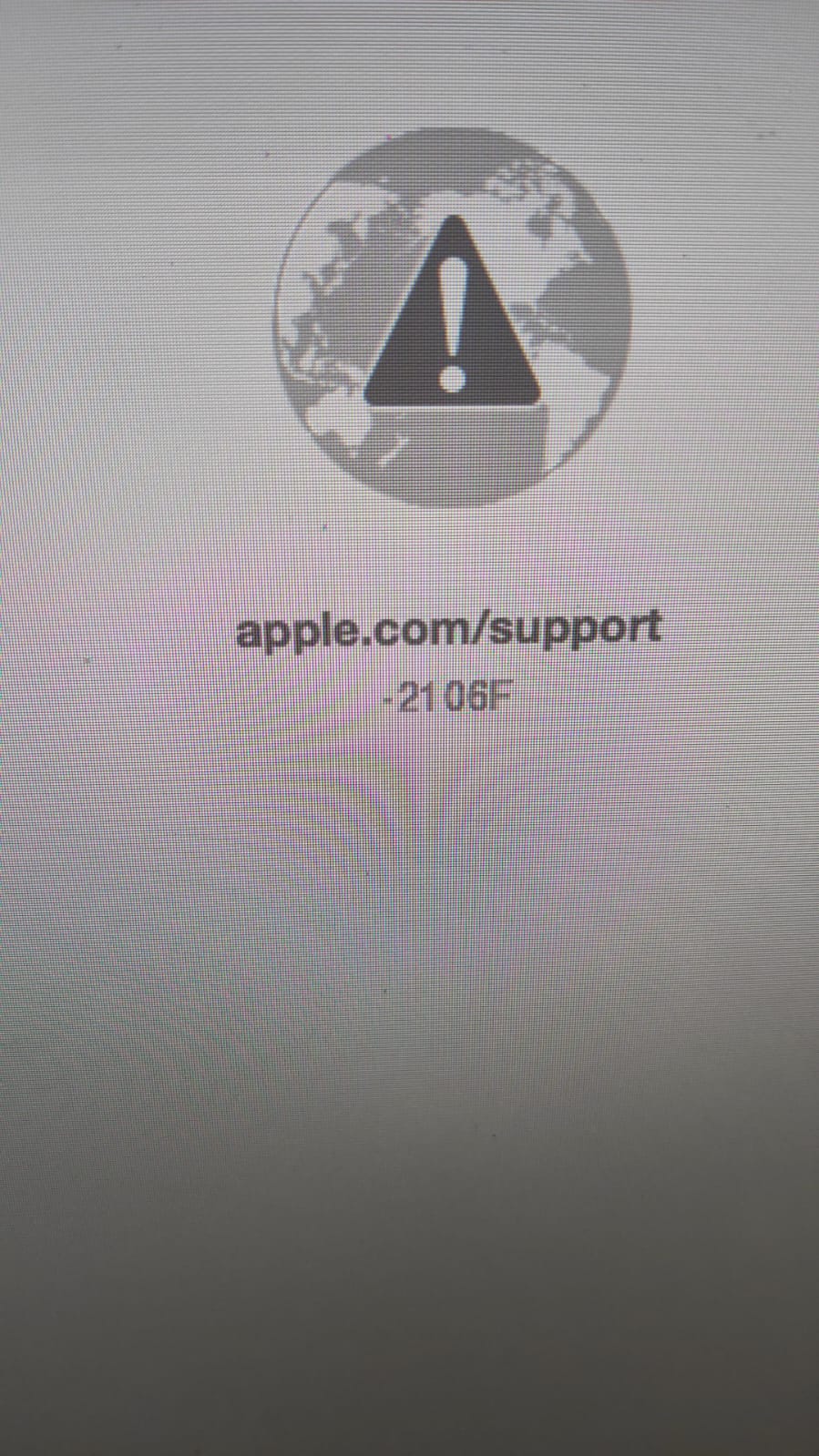What Is Error -2106F?
Error -2106F is the name of a runtime error for Mac, which could mean several possible things. Users who have reported this error have also stated that they received a pop-up with a link to contact Apple support. Possible issues with this error include bad hard drive or SSD drive or a program that may be causing your Mac to misbehave.
Read this post to learn more on what we found about this Error and different methods on how to fix it and stop seeing it.


Error -2106F Summary
| Name | Error -2106F |
| Type | Runtime error / Drive error. |
| Short Description | Similar to “error -210 buffersTooSmall: can not operate in the memory allowed”. Hard drive or SSD – related |
| Symptoms | A pop-up, stating “Error -2106F – apple.com/support”. |
| Program | MacOS |
| Fix Tool |
Try this fix to repair your Mac from errors and optimise system performance: Download
SpyHunter
|
| User Experience | Join Our Forum to Discuss . |
Error -2106F – What Are Its Symptoms
Error -2106F is similar to other Runtime errors for Mac, like Error -1426, Error Code 1309 and Error Code 101 in the sense of it being a Runtime error.
Users who have reported this error on Apple Discussions have had the following response given to them:
Gulp, my only notes on 2106F…
Error -2106f might mean a bad hard drive.
Victims have also uploaded the following screenshot in relations to the 2106F Error:

In case you see this error, it may be accompanied with the following types of problems:
- Internet speed starts slowing down.
- Your device may behave erratically.
- Some of your other apps may stop functioning.
Error -2106F is an error from the Runtime kind. This means that it could be a result of a hardware problem, bug that occurred due to badly written code or even malware, causing pop-ups. Whatever the case of Error -2106F may be, advices are to fix it immediately.
Error -2106F – How to Fix It?
Below, you can see possible fixes which we have found to work on forums for Error -2106F:
Fix #1:
- Turn off your Mac by holding the power button for 10 seconds.
- Hold the Option+Command+R buttons in order to start macOS in Recovery mode.
- Use Recovery Mode to boot your Mac into an earlier version, where you did not see the Error before.
Fix #2:
If all else fails, you can try the general fixes for Runtime errors for Mac we have set up below. Just make sure to backup your files first and know that they may not be 100% guarantee, but there is a strong chance that they may work for most errors:
Step 1: Close any apps or programs that may be in conflict.
When you get errors, like this one, often conflicting apps may be the case. Below, you can find the solutions for closing conflicting apps for Windows and macOS:
For macOS:
Go to Activity Monitor, mark any processes you believe are suspicious and close them by clicking the “X” button on top left above them.
After you have done this fix, you should observe if this error will show up again if you start and stop a specific process.
Step 2: Update and Re-install Any Software You Believe is Problematic.
For macOS:
Go to Applications and drag the icon of your program to Bin to uninstall it. For macOS, you can go to your AppStore and click on the “Updates” tab to check if any applications are out of date.
Step 3: Install the latest updates of your OS.
For macOS:
Go to System Preferences – Software Update and check for a newer macOS version. You will see a button to install it and Upgrade if its available.
Step 4: Scan your computer for errors and optimise it automatically.
If you have tried most of the fixes, but you keep getting error messages, then the best advice to go for is to make sure and check your computer for:
- Viruses.
- Tracking cookies and other pesky and harmful objects.
- Problematic files.
- Unwanted software.
- Adware.
- Browser Hijackers.
- Other errors that may be slowing it down.
You can do all of this by running an automatic scan of your computer using a professional anti-malware software. Such an advanced tool is created by cybersecurity and tech experts and is guaranteed to help detect and delete any malicious files and whatever may be causing errors and optimise your computer to make it fast again:
Spy Hunter scanner will only detect the problem. If you want the issue to be automatically removed, you need to purchase the full version of the anti-malware tool.Find Out More About SpyHunter Anti-Malware Tool / How to Uninstall SpyHunter
Mac Errors – Frequently Asked Questions
What are Mac Errors?
Mac errors are faulty problems of macOS. They are different types, affecting various programs running on your Mac.
Since macOS is frequently updated, it is easier to fix such errors, due to the way this operating system is constructed.
What Do Mac Error Codes Mean?
Error Codes on Mac are how your macOS explains the different types of problems that can occur on it. The number of the Mac Error code pops up on your screen, and it shows you the error with some explanatory text to help you fix it.
These error codes exist for both small and bigger problems, and in some cases, they can mean that there is a significant issue with your device.
Why Do I See Errors On My Mac?
The reasons may vary. These can be due to a badly written code, faulty software, external app modifying your app, incompatibility, problems with the resources required to run the app, and even a Mac malware infection.
What Types of Mac Errors Exist?
Just like with Windows devices, there are some general error types with Mac as well, including:
- Runtime Errors – when you execute a program and it fails due to badly written code, incompatibility with the program and web servers or other problems, like malware.
- Logic Errors – something in the logic makes the program fail to return results.
- Arithmetic Errors – a type of logic error, which involves miscalculation due to an erroneous configuration or code that does not fit the same logic as the system reads it.
- Resource Errors – when your device does not meet the resources required to run a program or if the program is coded faulty, so it requires more resources than necessary.
- Interface Errors – when there is a difference between what an app is meant to do and what it actually does.
- Compilation Errors – when the compiler of a software fails to turn complicated code into a simple language, understandable by your Mac.
Which are The Most Common Mac Errors?
According to different sources and online forums, the most commonly encountered errors on Mac carry the following codes:
- Error Code 36 – when Finder fails to read or write a file on your Mac.
- Error Code 41 – caused by malware, outdated software or corrupted files and directories.
- Error Code 50 – when you fail to copy and paste a file onto another drive, like USB or an external SSD or HDD.
- Error Code 2003F – it shows up when you try reinstalling your macOS in Recovery Mode. Possible causes include bad sectors in the hard disk, malware, etc.
What to Do If I See a Mac Error?
If you see an error on your Mac, your first job is to check the meaning of it. Then, you can see reputable forums, like Apple Discussions or SensorsTechForum in order to find different types of fixes for the problem.
How to Stop Getting Mac Errors?
You cannot. As long as there are people writing the code, there will always be the human error factor. However, there are several measures that you can take in order to significantly reduce the chance of getting a Mac Error:
- Check and update your Mac and your Apps (if possible) to the latest version on a daily basis.
- Install a relevant and reputable anti-malware for Mac.
- Install an optimizer for your Mac, which will keep all your apps updated, remove junk software, and improve your Mac’s health.
- Only install apps from trusted sources.


